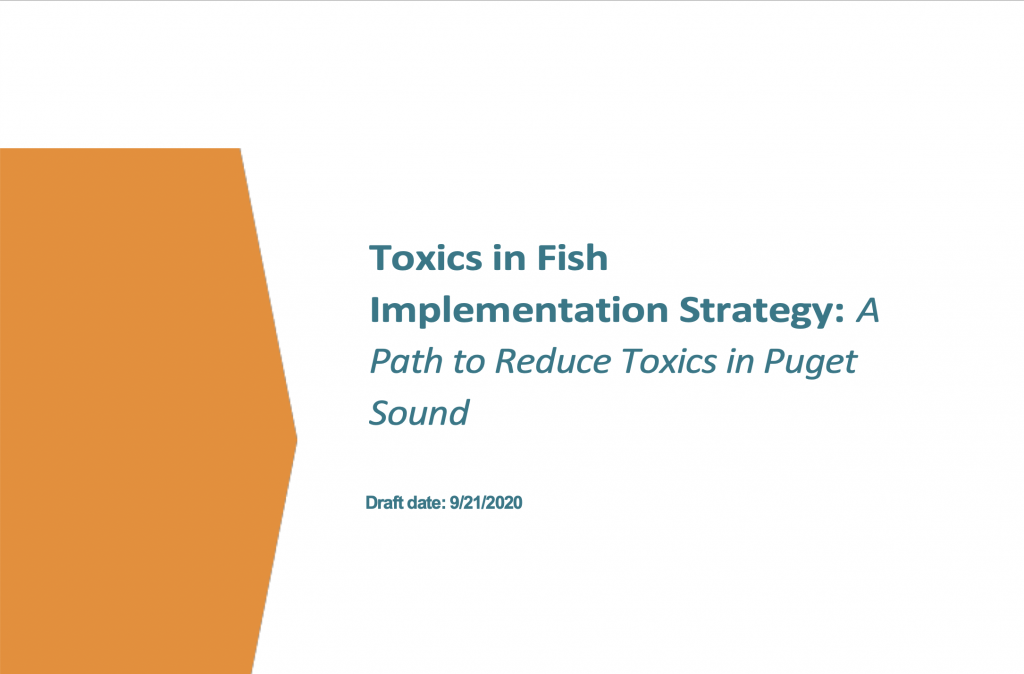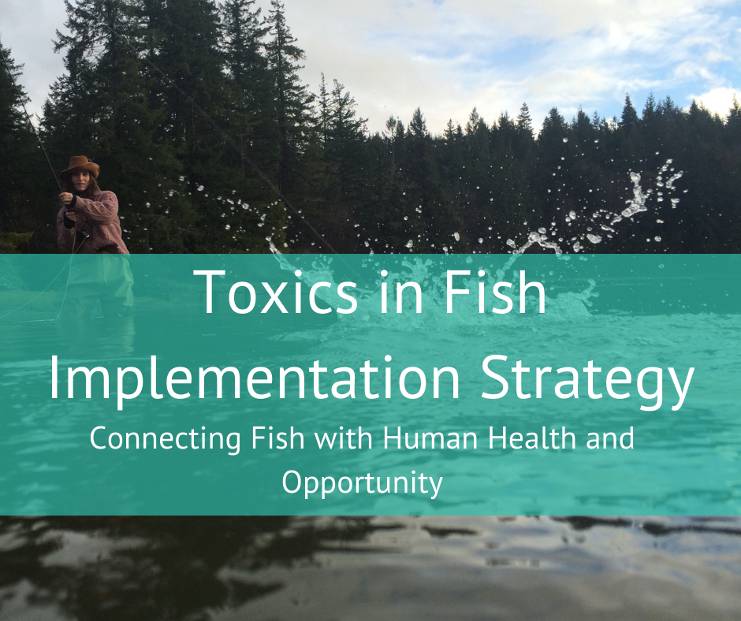
The Stormwater Strategic Initiative Lead Team is thankful for the excellent work by our many partners. We look forward to solutions that protect Tribal treaty rights, under-served communities and foraging cultures that live in polluted areas who are at disproportionate risk, in addition to aquatic life. Thanks to Jeff Rice at the Puget Sound Institute for sharing the strategy and an opportunity to provide comments.
The Toxic in Fish Implementation Strategy is an early stage strategy that illustrates the connections between manufactured products, land use and adverse effects on aquatic organisms and human health. We are at an inflection point now as we learn more about emerging threats, “chemicals of emerging concern,” that come from everyday products we use.
The following was originally posted as the Puget Sound Institute article “New Guidance for Cleanup of Toxins in Puget Sound” written by Jeff Rice, managing editor for the Puget Sound Institute. See the original article at the Puget Sound Institute. Updated with new deadline for public comment on 10/16/2020.
An EPA-funded team of scientists and other experts has completed draft recommendations for the future cleanup of toxic chemicals in Puget Sound. The group’s Toxics in Fish Implementation Strategy addresses pollutants such as PCBs and a slew of emerging contaminants that can affect species throughout the waterway. The strategy will be available for public review until November 6th after which it may be revised and submitted to the Puget Sound Partnership’s Leadership Council for approval.
The Washington State Department of Ecology is co-developing the strategy with the Department of Commerce and the Washington Stormwater Center. [Puget Sound Institute scientist Andy James was a member of the core team that wrote the report.] The new recommendations, if approved, will address the Puget Sound Partnership’s Toxics in Fish Vital Sign which tracks contaminants in adult and juvenile Chinook salmon, English sole and Pacific herring.
Policy discussions of toxics in fish have often centered around the occurrence of cancer-causing PCBs (polychlorinated biphenyls) in the environment, particularly as they turn up in salmon. The state has been under pressure to reduce PCB levels to meet federal water quality standards and to address healthy fish consumption rates for humans. The governor’s orca task force also identified PCBs as a serious threat to Puget Sound’s endangered southern resident orcas, which feed mostly on contaminated Chinook. While PCB reduction continues to be a high priority, the new strategy will address a much wider array of chemicals that affect wildlife across the spectrum.
Among the new concerns are contaminants known as endocrine disrupting compounds (EDCs). These include pharmaceuticals, pesticides and other products that can pass through wastewater treatment plants and have biological effects on species throughout the ecosystem. The strategy recommends increased monitoring and prioritization of these contaminants to overcome what it calls “key data gaps” regarding their toxicity in Puget Sound.
EDCs may have wide-ranging effects on species. Estrogenic compounds in the water, possibly from pharmaceuticals like birth control pills, are causing male species of English sole in Puget Sound to produce egg proteins not typically seen in that sex. Scientists are looking for similar impacts on juvenile Chinook salmon and Pacific herring. Thousands of chemical compounds ranging from illicit drugs and opioids to personal care products and pesticides pass into Puget Sound waters every day. Researchers say they hope to determine which of these compounds will do the most harm to species. If the strategy is approved, this will be the first time that such contaminants will be included in the state’s Vital Sign measurements.
The strategy also addresses two additional categories of toxic chemicals, polycyclic aromatic hydrocarbons (PAHs) and polybrominated diphenylethers (PBDEs). PAHs occur naturally in coal and crude oil and are commonly found in creosote that has been added to wood pilings or railroad ties as a wood preservative. Such chemicals can harm fish embryos in ways that mimic the effects of an oil spill. PBDEs are often used as flame retardants and can wash into Puget Sound through stormwater and wastewater or can be deposited as dust particles. Although banned from many products, PBDEs are still in circulation and can cause neurological problems in wildlife and humans. [Read more about these and other harmful “rogue chemicals” in the Encyclopedia of Puget Sound.]
In addition to identifying these key concerns, the strategy proposes management solutions such as “finding and fixing toxic hotspots; incentivizing redevelopment in high loading areas to reduce toxic loading; and accelerating in-water near-water cleanup of toxics.” The report was developed as part of a series of state and federal implementation strategies designed to provide a roadmap for Puget Sound recovery efforts.
The draft strategy is available for review at the Puget Sound Partnership website.

